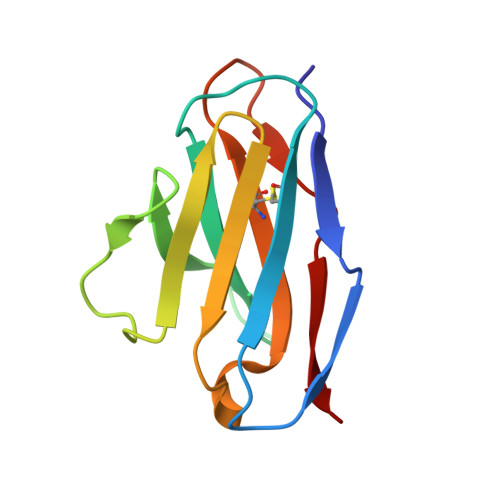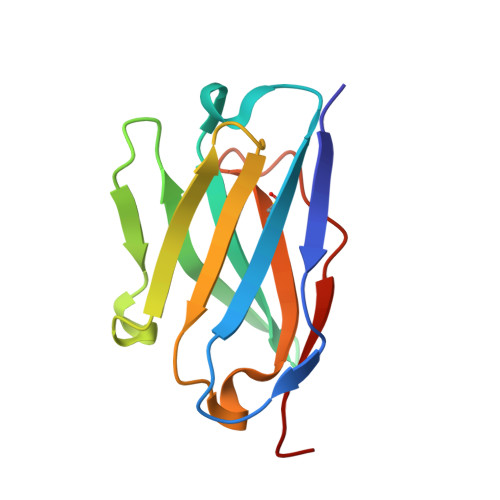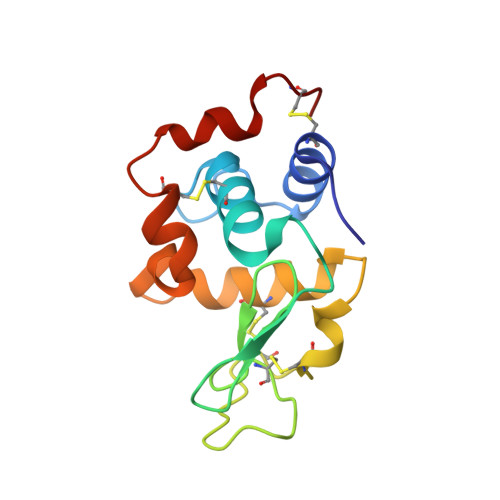Crystal structure of anti-Hen egg white lysozyme antibody (HyHEL-10) Fv-antigen complex. Local structural changes in the protein antigen and water-mediated interactions of Fv-antigen and light chain-heavy chain interfaces.
Kondo, H., Shiroishi, M., Matsushima, M., Tsumoto, K., Kumagai, I.(1999) J Biol Chem 274: 27623-27631
- PubMed: 10488102
- DOI: https://doi.org/10.1074/jbc.274.39.27623
- Primary Citation of Related Structures:
1C08 - PubMed Abstract:
In order to address the recognition mechanism of the fragments of antibody variable regions, termed Fv, toward their target antigen, an x-ray crystal structure of an anti-hen egg white lysozyme antibody (HyHEL-10) Fv fragment complexed with its cognate antigen, hen egg white lysozyme (HEL), was solved at 2.3 A. The overall structure of the complex is similar to that reported in a previous article dealing with the Fab fragment-HEL complex (PDB ID code,). However, the areas of Fv covered by HEL upon complex formation increased by about 100 A(2) in comparison with the Fab-HEL complex, and two local structural differences were observed in the heavy chain of the variable region (VH). In addition, small but significant local structural changes were observed in the antigen, HEL. The x-ray data permitted the identification of two water molecules between the VH and HEL and six water molecules retained in the interface between the antigen and the light chain complementarity determining regions (CDRs) 2 and 3 (CDR-L2 and CDR-L3). These water molecules bridge the antigen-antibody interface through hydrogen bond formation in the VL-HEL interface. Eleven water molecules were found to complete the imperfect VH-VL interface, suggesting that solvent molecules mediate the stabilization of interaction between variable regions. These results suggest that the unfavorable effect of deletion of constant regions on the antigen-antibody interaction is compensated by an increase in favorable interactions, including structural changes in the antigen-antibody interface and solvent-mediated hydrogen bond formation upon complex formation, which may lead to a minimum decreased affinity of the antibody Fv fragment toward its antigen.
Organizational Affiliation:
Department of Biomolecular Engineering, Graduate School of Engineering, Tohoku University, Aoba-yama 07, Sendai 980-8579, Japan.
















